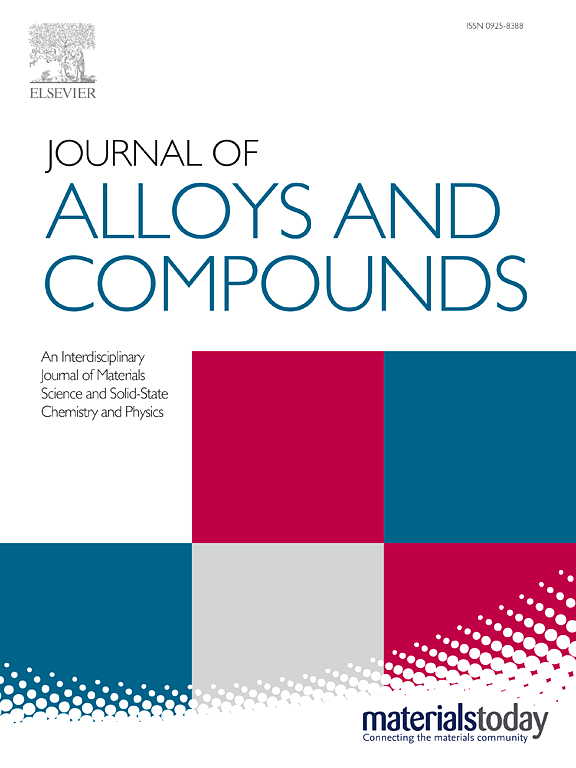Hot deformation behaviors and microstructure evolution of Mg-RE composite with trace titanium particles addition
IF 5.8
2区 材料科学
Q2 CHEMISTRY, PHYSICAL
引用次数: 0
Abstract
The uniaxial hot compression experiments of Ti/Mg-9Gd-4Y-1Zn-0.5Mn (wt%) composites were carried out by using a Gleeble-3800 thermo-mechanical simulator at temperatures ranging from 350 to 500 °C and strain rates between 10−3 and 1 s−1. Arrhenius constitutive model was developed for Ti/Mg composite, demonstrating strong predictive accuracy for flow stress with a value of ARRE% = 10.79 % and a correlation coefficient (R2) of 0.9911. The study thoroughly analyzes the relationship between grain structure and the deformation parameters, integrating microstructural characterization. From EBSD analysis, the results indicate that as lnZ decreases, the number of dynamic recrystallization (DRX) grain number increases, resulting in a shift from the <0001>//CD orientation to a more random distribution, which reduces the overall texture intensity. SEM and TEM observations further confirm that a decrease in lnZ leads to the subdivision of coarse deformed grains and the reduction of kink bands within long-period stacking ordered (LPSO) phases. The kink bands of the 14H-type LPSO phase and Ti-induced particle-stimulated nucleation (PSN) play a pivotal role in enhancing recrystallization and improving formability. These results highlight the significant contribution of Ti reinforcements in the deformation behavior and microstructural evolution of Ti/VW94 composites.
添加微量钛颗粒Mg-RE复合材料的热变形行为及显微组织演变
采用Gleeble-3800热机械模拟器对Ti/Mg-9Gd-4Y-1Zn-0.5Mn (wt.%)复合材料进行了单轴热压缩实验,温度范围为350 ~ 500℃,应变速率为10-3 ~ 1 s-1。建立了Ti/Mg复合材料的Arrhenius本构模型,该模型对流动应力的预测精度较高,ARRE% = 10.79%,相关系数(R2)为0.9911。本研究结合微观组织表征,深入分析了晶粒组织与变形参数之间的关系。EBSD分析结果表明,随着lnZ的减小,动态再结晶(DRX)晶粒数增加,导致织构强度从<;0001>;//CD取向向更随机的分布转变,整体织构强度降低。SEM和TEM观察进一步证实,lnZ的降低导致粗变形晶粒的细分和长周期有序堆积(LPSO)相内扭结带的减少。14h型LPSO相的扭结带和ti诱导的颗粒激发成核(PSN)对增强再结晶和提高成形性能起着关键作用。这些结果强调了Ti增强剂对Ti/VW94复合材料的变形行为和微观组织演变的重要贡献。
本文章由计算机程序翻译,如有差异,请以英文原文为准。
求助全文
约1分钟内获得全文
求助全文
来源期刊

Journal of Alloys and Compounds
工程技术-材料科学:综合
CiteScore
11.10
自引率
14.50%
发文量
5146
审稿时长
67 days
期刊介绍:
The Journal of Alloys and Compounds is intended to serve as an international medium for the publication of work on solid materials comprising compounds as well as alloys. Its great strength lies in the diversity of discipline which it encompasses, drawing together results from materials science, solid-state chemistry and physics.
 求助内容:
求助内容: 应助结果提醒方式:
应助结果提醒方式:


